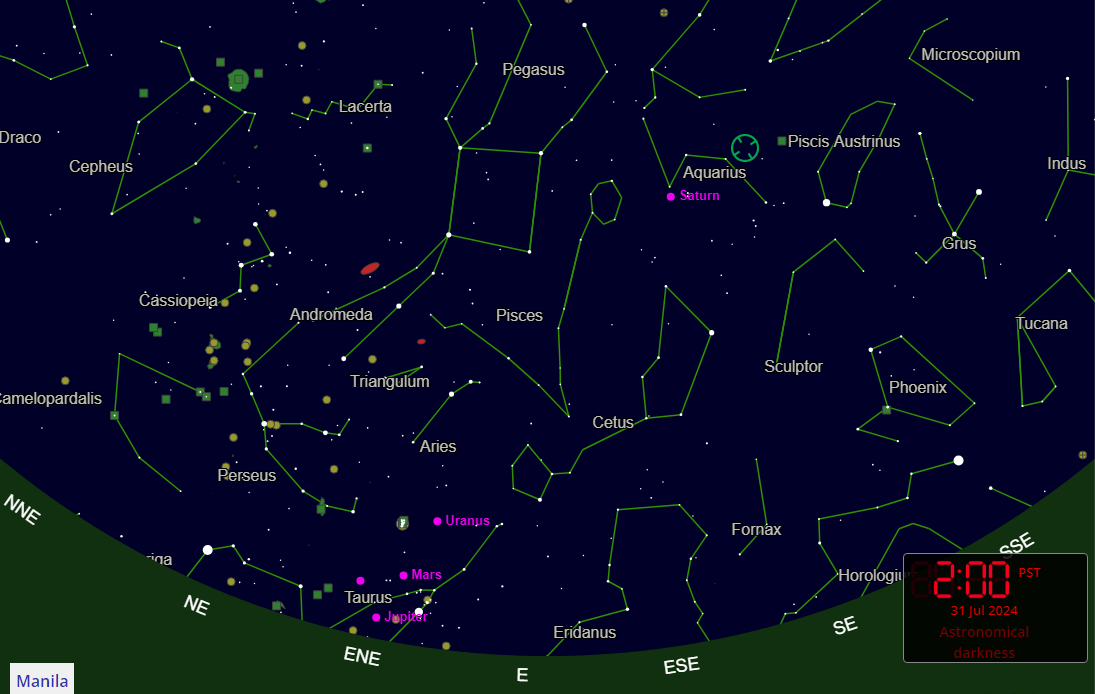
By Brian Jules Campued
Heads up, astrophiles! You better not miss the skies on Tuesday night until early Wednesday morning as these shooting stars, which light up twice as bright, fade away shortly.
About 25 meteors per hour are expected to race the country’s night sky during the peak activity of the Southern Delta Aquariid meteor shower on July 30, the Philippine Atmospheric, Geophysical, and Astronomical Services Administration (PAGASA) said.
In its astronomical diary for July, PAGASA said the meteor shower has been visible since July 12 and will continue until August 23.
“In Manila, the shower will be active each day from 8:19 p.m. until around 5:13 a.m. the following day, when its radiant point, the constellation Aquarius, is highest in the eastern sky,” the state weather bureau said.
“The radiant point is highest in the sky around 2:00 a.m., producing the best view of the meteor[s],” it added.
This is good news for stargazers, as PAGASA also noted that meteor-watching during the whole night will not be affected by moonlight as the shower’s peak activity will occur on a new moon phase.
Meanwhile, another meteor shower called the Piscis Austrinid meteor shower has also been active from July 15 to August 10, with peak activity on July 28.
“It will be observable once its radiant point, the constellation Piscis Austrinus, is above the eastern horizon around 8:48 p.m. each night and remains active until around 5:12 a.m. the next day,” PAGASA said.
Approximately five meteors per hour are expected to be produced by this second meteor shower at its highest radiant point in the sky around 2:00 a.m.
The weather bureau advised the public to choose a dark observation site under clear and moonless sky conditions since the meteor showers can be viewed without using special equipment like telescopes and binoculars. – iro
